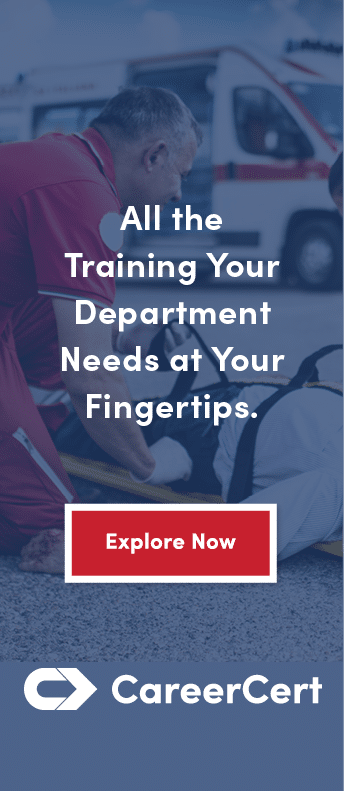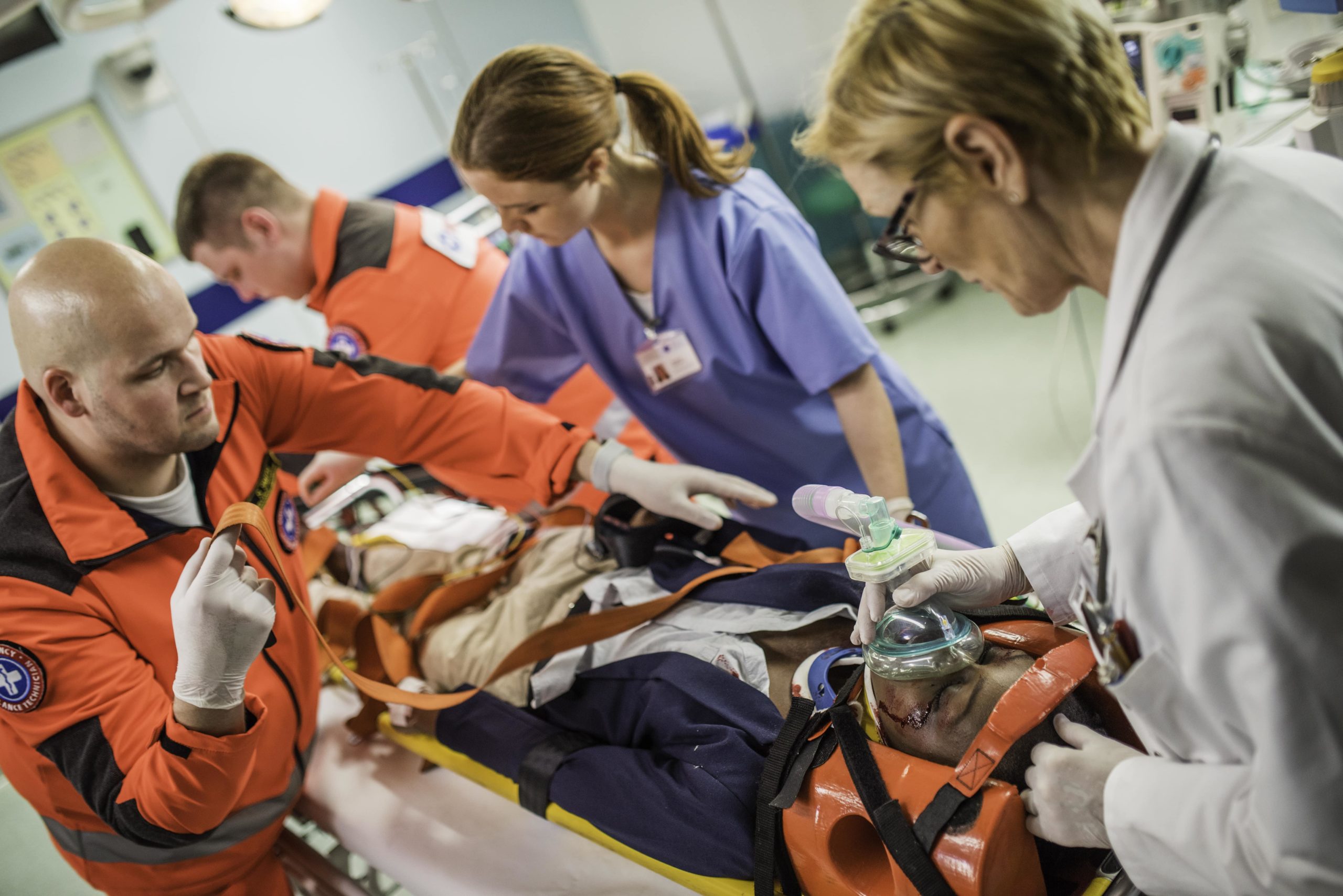The Critical Need for Online Healthcare Training
 With the COVID-19 pandemic reaching more than 200 countries worldwide,1 industries across the nation have recognized the importance of innovative online training and education options—especially within the healthcare and emergency industries.
With the COVID-19 pandemic reaching more than 200 countries worldwide,1 industries across the nation have recognized the importance of innovative online training and education options—especially within the healthcare and emergency industries.
With increasing demands on departments, practices, providers, and personnel, the emergency and healthcare industries need training solutions that fit their specific needs. Because the truth is when an emergency hits, it’s difficult to respond if you are stuck in a classroom.
Benefits of Online Training
“Technology is not only transforming how we deliver education and training but is expanding our capacity to respond to the needs for higher education and training in a broader sense,” Cheryl Fisher and William A. Sadera write in a study comparing online to in-person medical education.2 “With a long history of serving isolated and remote learners, distance learning has now emerged as an effective, mainstream method of education and training that provides flexible learning opportunities in response to learners’ needs.”
In the same study, Fisher and Sadera found that, across literature reviews and in their own research, there is “no significant difference in learning outcomes between distance and face-to-face environments.”2 But here’s an essential caveat: “providing the courses are designed using appropriate pedagogy and appropriate application of learning theory.” Any education, whether traditional or online, cannot result in the best outcomes unless that education is delivered by industry experts using the best technology, the best modalities, and the best practices.
At CareerCert, we understand this thoroughly. That’s why our courses are taught by industry experts with over 100 years of combined experience and frequently reviewed and updated by our medical advisory board. In addition, we invest in cutting-edge educational technologies proven to help improve patient outcomes—because that is what we care about.
At CareerCert, we understand this thoroughly. That’s why our courses are taught by industry experts with over 100 years of combined experience and frequently reviewed and updated by our medical advisory board. In addition, we invest in cutting-edge educational technologies proven to help improve patient outcomes—because that is what we care about.
While online education has been proven to be as effective as traditional education, there are several benefits to flexible and remote learning, many of which have become glaringly apparent during the coronavirus pandemic. These benefits include:
- Consistent and quick communication of information across diverse geographical boundaries
- Flexible options that can fit around extra shifts and busy schedules
- The ability to engage in incremental, year-long training that allows you to master a subject before moving on (versus receiving a firehose of information in one day)
- Training that can happen anytime, anywhere and doesn’t take away from time at work
- Decreased risk of disease or injury due to travel and large crowds
- Saved time and resources without travel expenses or the need to schedule a time for your entire department to come together for training
- Innovative modalities that provide a better fit for the topic, better engagement, and a better experience for learners
About the importance of investing in online education, Fisher and Sadera share:
“The demand for flexible and convenient educational programs to support life long learning and career development in the field of continuing medical education (CME) is increasing. . . . Distance-based learning, as an instructional format, can respond to these demands by offering a flexible and convenient learning opportunity which can be a constructive educational experience with positive outcomes for the participants. Distance-based CME offers the potential for creating a new learning environment in which interaction, collaboration, and knowledge building are the defining features (Curran, Kirby, Parsons, Lockyer, 2003).”2
Our Mission
With increasing demands on departments, practices, providers, and personnel, the emergency and healthcare industries need training solutions that fit their specific needs. We need education that expands beyond classrooms and that fits the complex demands of an evolving industry. Because the truth is when an emergency hits, it’s difficult to respond if you are stuck in a classroom.
At CareerCert, we are focused on providing these innovative and industry-leading solutions. From scenario-based education that gives students an interactive view into how their actions impact outcomes to virtual reality and virtual instructor-led training, we are investing in the latest technologies and the latest best practices to keep providers prepared for any situation. We are passionate about helping first responders and healthcare providers be at their best so that they can best protect and care for those in our community.
We provide customized training solutions for providers as well as departments, practices, and hospitals. Not only will these groups have access to our growing library of courses, they can also easily create and disseminate courses, training, or information specific to their region and their needs. In addition, with every course—whether one of our own or one you create—we provide knowledge checks to ensure your team is operating on the same page. Our easy reporting not only allows you to track compliance and all your team’s certifications and training in one place, it also allows you to see knowledge gaps, make adjustments, and implement remediation for your team on an individual as well as company-wide level. Tools like these are crucial to helping providers build the confidence and competence they need to improve outcomes, especially when emergencies hit.
Explore continuing education solutions for individuals and agencies.
- World Health Organization. Situation Report- 56. https://www.who.int/docs/default-source/coronaviruse/situation-reports/20200316-sitrep-56-covid-19.pdf?sfvrsn=9fda7db2_2. Accessed March 13, 2020.
- Fisher C, Sadera A. Comparing student learning and satisfaction between learning environments in continuing medical education. International Journal of Instructional Technology and Distance Learning. May 2011.



